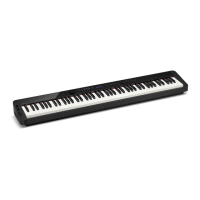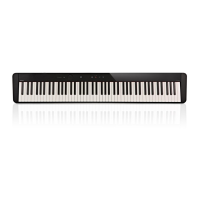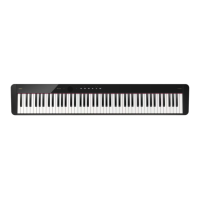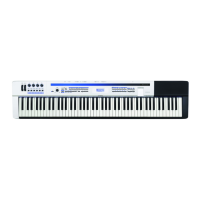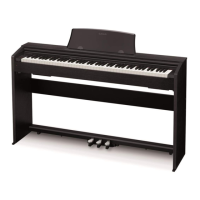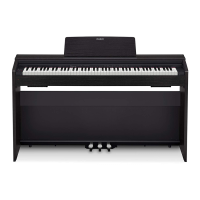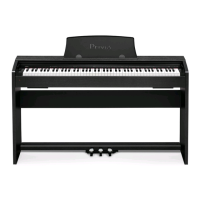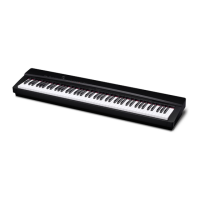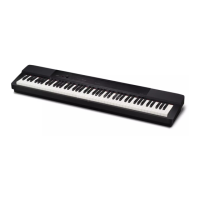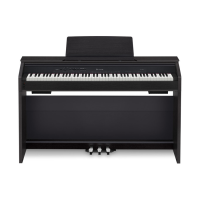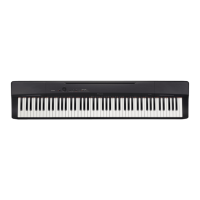Applying Effects
EN-52
The Digital Piano’s DSP (Digital Signal Processor) can be used to apply various effects to the built-in
tones. Effects include equalizer, tremolo, limiter, wah-wah, among others.
Preset DSPs
This Digital Piano is equipped with 100 preset DSP effects. These effects can be applied to any of the
built-in tones, and the effect settings adjusted as you like.
DSP Tones
DSP effects can be switched ON (enabled) or OFF (disabled) for each tone. Some DSP effects are
preset to ON or OFF depending on the built-in tone. For tones that use DSP effects, a preset
appropriate for the tone is assigned as the default DSP. This is called a “DSP tone.”
• To check whether a particular tone is a DSP tone, refer to “Tone Lists” in the separate “Built-in Music
Data Lists”.
1.
Perform the operation described in “Selecting a Single Tone” (page EN-41)
operation to select a tone.
2.
Select the “10 Effect” F button set. See “To change the F Button Set” (page
EN-32).
3.
Touch the F4 button (DSP).
DSP is enabled and the F button menu F4 appears enclosed in brackets [ ].
4.
To disable DSP, touch the F4 button (DSP). The enclosing brackets [ ] disappear.
Using DSP Effects
Enabling or Disabling DSP
Displayed when DSP is enabled
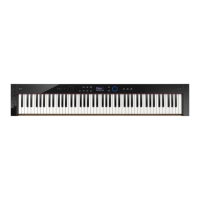
